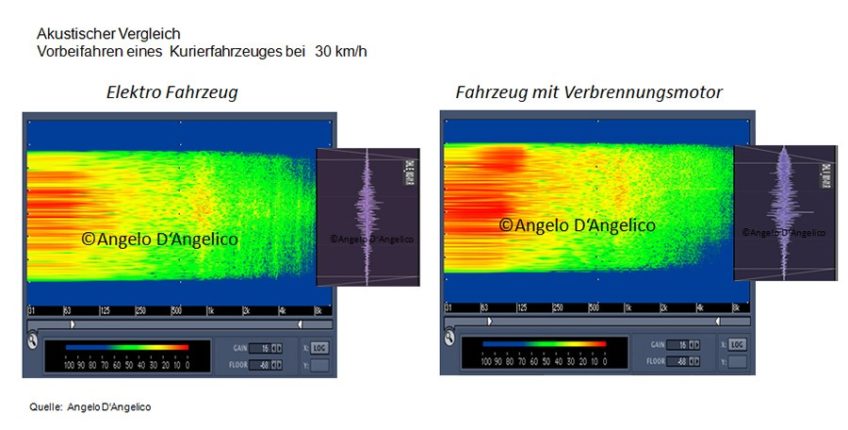The project uncovered structural errors in the standard measurement method for acoustic comparisons of electric vehicles with those using internal combustion engines.
The project undertook the demanding task of designing its own measuring system. The measurements taken using this new method revealed considerable differences in the acoustic pattern of approaching electric and conventional vehicles.
A universally valid acoustic structure was identified in the case of vehicles with internal combustion engines. Based on this structure, an artificial driving noise was developed that electric vehicles can emit using an audio generator. It was evident that road users noticed the modified vehicles much better than standard electric vehicles, even if the audio volume was low and the modification only switched on when approaching: clearly the type of sound plays a more decisive role than its volume.
The research was unable to find any documented accidents that are directly attributable to electric vehicles’ lack of noise. In an online survey, experienced users were asked for their assessment of the risks of electric vehicles. This enabled, among other aspects, descriptions of critical situations to be recorded, which are being incorporated into the examination of measures to increase safety.
The communication between partners from different model regions should be improved for future projects, as it was apparent that cross-project synergies were not being sufficiently realised until late in the project.
Infrastruktur
Circa 15 car-charing stations with charging infrastructure (e-Flinkster), plattform elektroMobilität and Micro Smart Grid at the EUREF-Campus in Berlin-Schöneberg (hier u.a. 20 Ladepunkte unterschiedlicher Bauart, Großbatterie, Wind- und Solaranlagen)
Funding Code
03KP512
